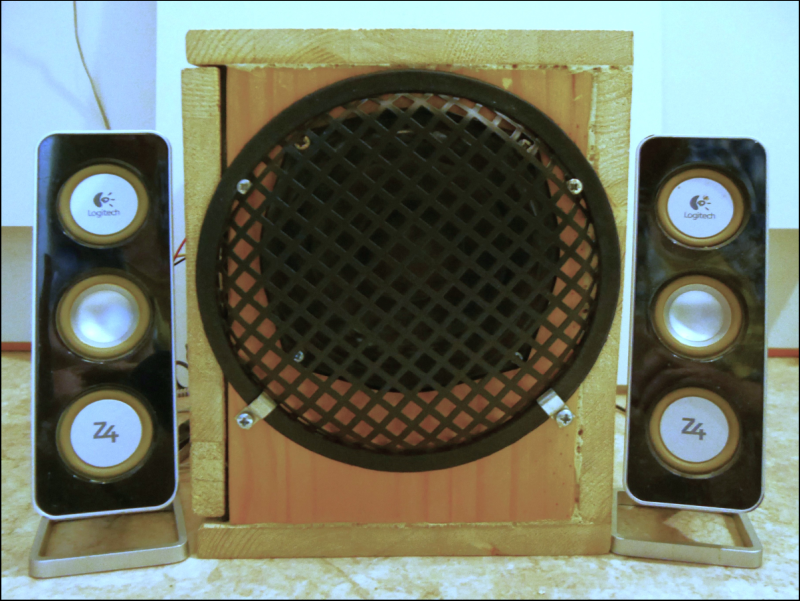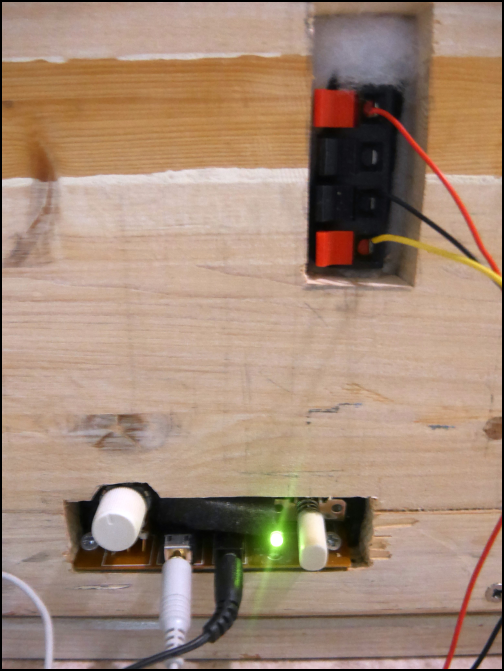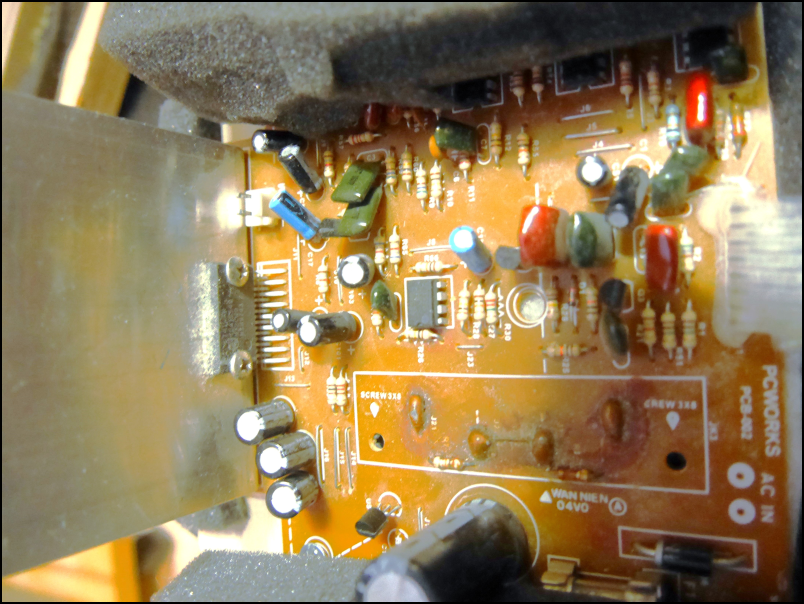This story started in November 2007. In that year I went looking for a replacement for my Philips MMS203 PC speaker set that no longer met my wishes. The sequel came in 2024 when I wanted music in my office.
Hans Vosman
 |
| You can easily fix the taskbar |
For DIY, I prefer to buy second -hand material in the thrift store due to the (lower) costs. The purchase usually meets my expectations. But sometimes I think very differently about a product that, according to various reviews, would give a very good sound reproduction. The Cambridge Soundworks was initially such a disappointing product. Unfortunately, the net feeding and the original satellite boxes were missing. But this was not really a problem, luckily I still had a suitable net feeding and I also had the Philips MMS203 satellite boxes. That the Cambridge Soundworks disappointed me was in the music reproduction: it was downright disappointing. The problem was not so much the electronics but the plastic housing. With a little volume, everything started vibrating and rattling, absolutely no music enjoyment. I removed the housing and this amplifier became my new test system. I now had a compact and easily deployable test system with a lot of potential. The TDA1554Q Chip can deliver 22W to the subwoofer and 2x11W to the satellite speakers.
Other system
About seventeen years later I wanted to build a new sound box with which I could easily play music in my workplace in the attic. I had two speaker boxes with a Philips AD7063 speaker. I found the sound reproduction remarkably good, but the two boxes ask with amplifier and cabling quite a bit of space. In short, not so suitable for use on my work table. An all-in-one solution therefore seemed much more practical to me. As an extra challenge, I wanted to reuse as many materials as possible for the still to be built sound box (so buy at least new parts). In the end I only bought a protection schedule for the subwoofer.
Build
 |
|
Above the connection for the satellite speakers, under the volume button, |
I think it is special that I have made the subwoofer cabinet of residual wood from previous activities. This therefore more or less also applies to the recycled parts such as the Harman Kardon HK695 Subwoofer (5 inch) speaker, the built-in Cambridge amplifier print, the original Cambridge connectors, the on/off switch, the Volumeregelaar and the power supply connection. Such parts are of course also for sale in electronics stores.
The high and midtones will be displayed by my Logitech Z4 satellite speakers. This expansion is not necessarily necessary for the subwoofer, but the Cambridge amplifier print simply has an amplifier for satellite speakers. And that provides a more complete sound image.
I made the left side panel suitable for placing the original Cambridge parts, such as the volume control, the on/off switch, the speaker connectors and the Cambridge amplifier print.
The construction of the subwoofer cabinet has taken some time, because it is important that the glue has the opportunity to dry. With regard to the size, I opted for the dimensions 21 cm (b) x 28 cm (d) x 28 cm (h), partly due to my wood choice, including a number of bookshelves (pine) of 21 cm wide.
The side panel is placed in such a way that the wiring of the satellite speakers could easily be connected. The side panel on the left can be screwed loose. The Cambridge Soundworks parts are also placed on this panel. Finally, the HK695 Subwoofuidspeaker is mounted on the front panel of the subwoofer cabinet, together with the new speaker grid. After many saws and thinking, the wood turned into boards and beams. It has been made in this to be able to connect the cables.
In theory, a larger speaker can give a better bass display, but my design is intended for the somewhat smaller work in a not too large space (up to around 20 m2).
 |
| The Cambridge Soundworks amplifier print with cooling element |
Gluing
 |
|
| Above the connection for the satellite speakers, under the volume button, The on/off button, the food connection and the 3.5 mm jack connection |
I used 8 mm thick dowels and construction glue to turn the boards into a sturdy cupboard. The construction glue is not necessarily necessary, but I happened to have that type of glue. This type of glue works filling. If you are not familiar with construction glue, use wood glue because incorrect use of construction glue can yield quite a mess. I glued the walls step by step to finally have a sturdy sound box. I have provided the inside of the box with a remaining insulation material and soft foam from packaging material.
The only new part, the loudspeaker grid, turned out to be a size too large, but this grid fits exactly on the already present screw holes in the previously used front panel. This also includes the connection point for the subwoofer. Don’t forget to connect the wiring of the subwoofer with this.
The printed circuit board is equipped with sound damping material as well as possible to make the cupboard as vibration -free as possible. A subwoofer can vibrate considerably, so it is very important that the cupboard is firmly put together. A rattling cupboard disrupts listening pleasure.
The subwoofer is also directly connected to the amplifier print here. Furthermore, the Cambridge Soundworks parts are also placed. There are also the connectors here to connect the satellite speakers and to deliver the input signal via a 3.5 mm jack-plug.
I have mounted the original 5 inch Harman Kardon WOEPLUIDPAPER on the front panel of the subwoofer cabinet together with the new speaker grid. Don’t forget to connect the subwoofer to the amplifier print.
Other design
In principle it is possible to use any other suitable amplifier print (or design). An alternative to me was a print based on three TDA2030 ICs. However, this concept asked for a symmetrical net feed, and I didn’t have it at the time.
The advantage of installing is that the amplifier print with parts are better protected. A disadvantage is that with larger power the temperature in the cupboard can rise. When the cooling plate becomes really hot, the cooling is insufficient. In that case, a little more ventilation is needed and/or it is wise to place the cold store outside the speaker box, if possible.
This 2.1 set may be there! The music is now displayed a lot better!